Tyre Tests
 44
44
Tyre Reviews Tyre Tests
 1897
1897
Summer Tyre Tests
 595
595
All Season Tyre Tests
 1190
1190
Winter Tyre Tests
Total Tests: 530
Most Tested Brand: Michelin (488 tests)
Most Tested Tyre: Dunlop Winter Sport 5 (63 tests)
Test Type
Season
Vehicle Type
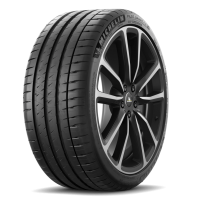
EVO are the only publication to put out their summer tyre test so late in the season, and while the timing is less than ideal, the content is always excellent.
2018 is no different, with the September EVO issue covering six 235/35 R19 UUHP / max performance tyres using a Ford Focus ST (we recently used the same car to test Michelin PS4 vs PS4S vs Cup 2 here)
The test winning Michelin was no surprise, the Pilot Sport 4 S always performs excellently when tested, but it was a surprise to see the Continental Sport Contact 6 bested by the aging Goodyear and Dunlop pairing. Perhaps there was some home advantage as the test was conducted at Goodyear's incredible test facility in Miraval, France.
Read Full Test >>
What's the fastest trackday tyre? What's the best track day semi slick tyre to use on the road and track? I take 3 very different track day tyres and put them on a BMW M2 to see which is best in the dry and wet. The video was shot at MIRA and Cadwell Park in the UK.
Read Full Test >>

The 11th July 2018 issue of Auto Express magazine tested ten 225/45 R17 summer tyres, using a VW Golf at the Continental test facility in Uvalde, Texas. The end result was closer than ever, with the worst tyre on test just 3.7% overall behind the test winner.
Read Full Test >>
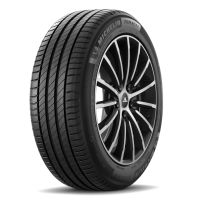
This year the Hungarian publication Auto Navigator have tested fourteen 205/55 R16 summer tyres, but also included an all season tyre (the Michelin CrossClimate), a full winter tyre, and most interestingly worn summer and winter tyres.
It's important to note that the worn winter tyre used was from last years test, whereas the worn summer tyre was 7 years old and had been stored in "sub optimal conditions". While the tread depth of each of the worn tyres isn't exactly clear, the worn summer tyre was at a huge disadvantage due to age and storage conditions.
All tests were performed around 15c air temperature. Sadly aquaplaning wasn't tested by the magazine.
Read Full Test >>
Sadly, this years Auto Review tyre test is behind a paywall, but given the range of tyres they tested, the overall results were worth covering.
They also made a rather interesting youtube video of the test, so if your Russian is up to scratch, follow this link.
The full results are on the AutoReview.Ru website, if you're a paying subscriber.
Read Full Test >>
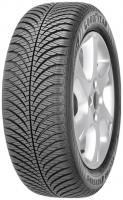
When it comes to trying new things in tyre tests, the German publication Auto Bild leads the way, and with their latest SUV 4x4 all season tyre tyre test they are once again pushing new ground.
Not only do they test six all season tyres in the SUV / 4x4 size of 235/60 R18 and include reference summer and winter tyres, but they also include two all terrain (AT) off-road tyres. These AT tyres aren't specifically designed to work in snow and ice like the all season tyres have been, instead they have a more off-road bias to their performance bend. Even with this added off-road performance, they still qualify as legal all season tyres thanks to them being marked with the "three peaks mountain and snowflake" symbol.
As a result, the AT tyres have a very different performance blend to the all season tyres on test, and while their snow performance was surprisingly OK, this test shows how badly they perform on-road, specifically in the wet.
Read on for the full details! For reference, the two AT tyres are the Yokohama Geolander AT G015, and the General Grabber AT3.
Read Full Test >>
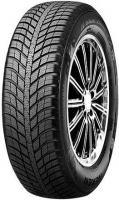
The 2018 ADAC all season test has tested nine 175/65 R14 all season tyres, with a summer and winter tyre as comparison. All eleven tyres were put through dry, wet, snow, ice and wear testing, and unusually the hugely successful Michelin CrossClimate finished in last place!
Read Full Test >>
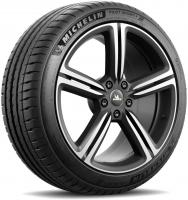
The 2018 Auto Motor Und Sport (AMS) summer performance tyre test uses an Audi A3 to test eleven 225/45 R17 tyre patterns.
As in previous years, AMS have included subjective handling data in their testing, which is important to help us understand how a tyre feels. Even with this extra element of testing the winning tyre was no surprise - the Michelin Pilot Sport 4 takes its eighth win out of eight tests thanks to a dominant performance in the dry and wet.
Read Full Test >>
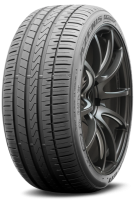
It's not often you see a tyre test where the highest placed premium manufacturer is placed in fifth place, and often test winning Goodyear and Michelin brands are eighth and ninth respectively, but that's exactly what the 2018 ACE / GTU 235/45 R18 tyre test shows.
Read Full Test >>

It's rare you find tyre tests specifically scoring subjective handling qualities as it's a very difficult thing for tyre testers to quantify, but this latest tyre test from the Finish publication Test World scores the tyres subjective behaviour out of a possible ten points in both the dry and wet. This is particularly interesting if you're not worried about that final 0.1 seconds of dry lap time, but do rate the subjective qualities of a tyre such as steering feel, feedback and car balance.
This test covers sixteen 225/45 R17 UHP tyre patterns using an Audi A3 - perhaps not the last word in dynamic handling but it is still an insight to the tyres we don't usually get.
Read Full Test >>
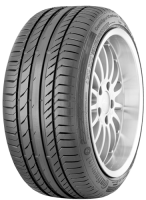
Thanks to the explosion in SUV type vehicles, tyre companies are feverishly updating their SUV and 4x4 product lines. To see which manufacturer is currently doing the best job, Auto Bild Allrad have tested eight of the latest patterns in the large 265/60 R18 size.
Read Full Test >>
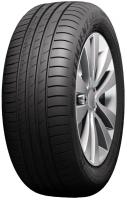
The 2018 Gute Fahrt test is a confusing tyre test for a number of reasons. Firstly is tests both summer and all season tyres in the same dry and wet tests, but fails to include the all season class leading Michelin CrossClimate.
Read Full Test >>
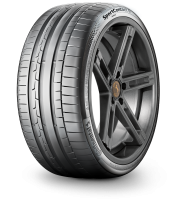
This year Auto Bild have covered both 19 and 20" UHP tyres, and while we've covered the 20" test already, we delayed covering the 19" test for a few weeks.
In those few weeks, Sport Auto Magazine released their 19" tyre test, and it uses exactly the same 245/35 R19 and 265/35 R19 tyres, on the same BMW M2, and tests the same six UHP tyres at the same location.
The logical question would be why publish this version of the test, as the results should be exactly the same? Well, they're not. Whether it be down to driving style, test parameters or just the weather on the day, Sport Auto and Auto Bild have managed to come up with two different test results using the same vehicle and tyres, proving just how close the very best tyres on the market are.
Read Full Test >>
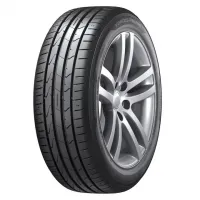
There's a lot of tyres in the 2018 Auto Bild 195/65 R15 test, so we'll keep the intro as short as possible and let the data do the talking.
It's worth keeping in mind, the twenty tyres chosen for this test have been through a 51 tyre wet and dry braking pretest. This means the tyres included in this test are some of the best tyres available on the market, had Auto Bild included some of the worst tyres in the pretest, the gap between the best and the worst tyres overall would have been much larger.
Read Full Test >>

The latest trend of combining two tyre tests into a single result seems to be continuing, with the brilliant German publication Sport Auto combining six ultra high performance tyres and three track day tyres into a single test!
Using a BMW M2, Sport Auto used the M2 OE sizes of 245/35 R19 front and 265/35 R19 rear, and objectively tested wet and dry performances while also scoring the subjective handling and feel of a tyre.
As you would expect, the track day tyres dominated in the dry, were the weakest in the wet, and generally had the highest rolling resistance and were the nosiest. Some of the road tyres were surprisingly close to the track day rubber during dry testing, and they were leagues ahead in the wet testing.
Read on for the full results!
Read Full Test >>

2018 is setting up to be an excellent year for tyre testing, with the epic German publication Auto Bild already delivering three excellent tests. Of the three, this 20" tyre test is perhaps the most interesting of the trio.
For this investigation, Auto Bild have bought eight 245/30 R20 tyre patterns and placed them through the usual array of wet and dry tests using a Mercedes E Class.
While the internet favourite Michelin Pilot Sport 4S takes its traditional top spot, there is a strange result for the Continental Sport Contact 6, a great result for the ten year old Goodyear Eagle F1 Asymmetric 2 (not 3!), and Bridgestone make a return to tests with the old Potenza S001.
Read on for the full results!
Read Full Test >>

Every year Auto Bild test over fifty tyres in wet and dry braking test to decide which twenty tyres make it through to the full summer tyre test. In 2018 they have used the popular 195/65 R15 summer touring tyre size.
The spread of dry braking results was higher than usual this year. The best dry braking tyre on test, the Hankook, stopped the car from 62mph in 34.5 metres, and the worse 42.4 metres. This 7.9 metre difference might not sound like a huge amount, but it is the difference of stopping or hitting an object at around 26 mph!
The spread in the wet was even larger. The Bridgestone was best in the wet, stopping the car from 50 mph in 34.3 metres, where as the worst tyre on test took a massive 17.6 metres further, totaling 51.9 metres. That's over 4 car lengths further and a huge residual speed at time of accident.
Read Full Test >>
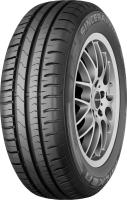
In 2018, German test body ADAC have tested fourteen 175/65 R14 summer tyres, and sixteen in the larger 205/55 R16 size.
In this 175/65 R14 test, the mid range brands dominate! Falken impressively win the test and continue their run of recently form with the SN832 Ecorun having a very balanced overall performance. The Continental owned brand Semperit finishes in second place, owing to an excellent wet performance, and third place was the best result a premium manufacturer could manage with the Dunlop proving to be a well balanced tyre.
Read Full Test >>
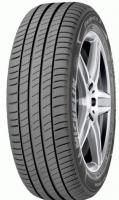
In 2018, German test body ADAC have tested sixteen 205/55 R16 summer tyres, and fourteen tyres in the smaller 175/65 R14 size.
In this 205/55 R16 test, premium manufacturers take the top three places. Michelin lead the way, having the lowest wear on test and proving to be excellent in the dry, Bridgestone have a surprisingly strong performance in the wet to score second place overall, and Continental have a very balanced showing for the last of the podium spots.
Read Full Test >>

The first tyre test of 2018 is rather unique. German publication Auto Zeitung have tested six summer tyres and three all season tyres all in the same test, and while it's going to make the Tyre Reviews version of the result at the bottom of this page read slightly wonky, it's a really interesting way of comparing the dry and wet performances of the two tyre types.
Keep in mind, the nine tyres were only tested in the dry and wet, there was no snow or ice testing to highlight the all season tyres year-round abilities. This means this test should just be looked at to see how the all season tyres compare to the summer tyres in summer conditions, rather than making a purchase decision for year-round motoring.
Read Full Test >>